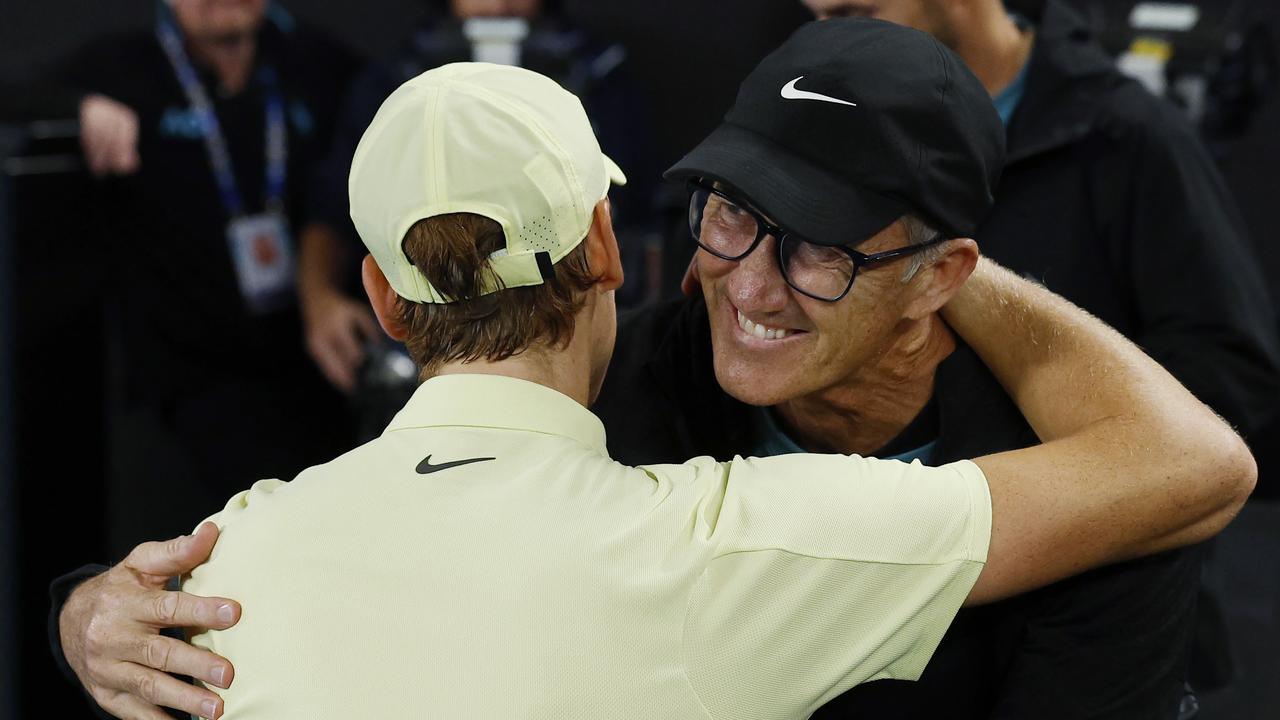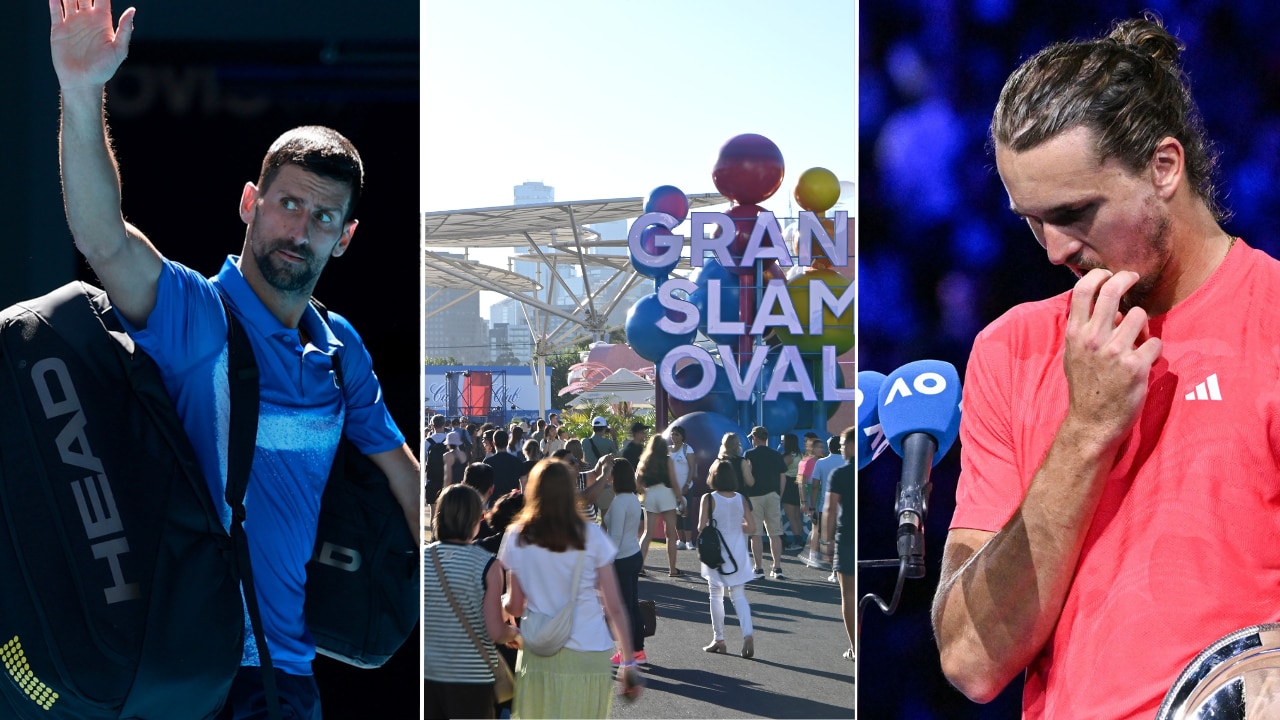Sabalenka and Keys in an Open final that packs a punch
The battle of women’s tennis two biggest hitters will be won in the mind.
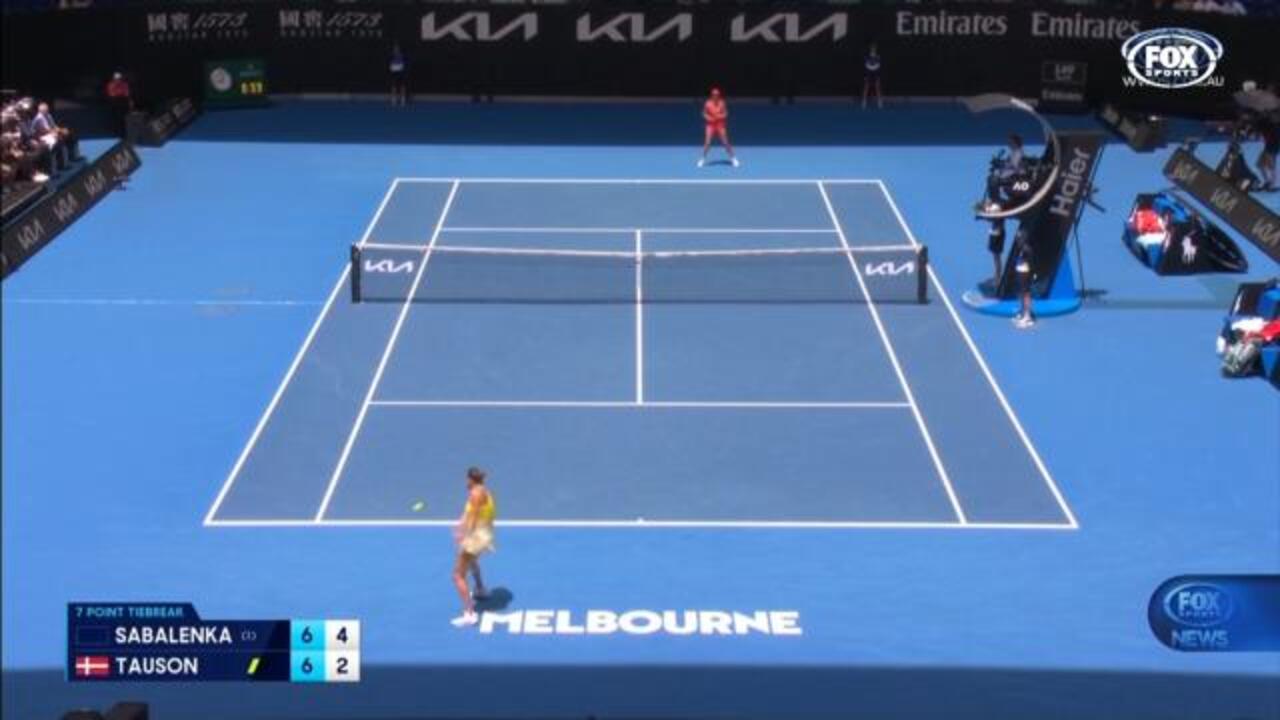
Aryna Sabalenka wants to cross a river. She cannot swim. She asks Paula Badosa to carry her across. Badosa hesitates. Sabalenka might sting her. They’ll both drown. Sabalenka promises not to. Why would I do that to you? Kindly in nature, Badosa agrees to help.
Halfway across the river, Sabalenka stings her mate. They’re doomed. The dying Badosa asks Sabalenka, “Why did you do it? Sabalenka replies, “I’m sorry. I couldn’t help myself. It’s in my nature.”
The old fable about the scorpion and the frog came to mind when Sabalenka ruthlessly dispatched Badosa, her bestie, in the semi-finals of the Australian Open. Nobody wishes to see Badosa win a breakthrough slam more than Sabalenka, but she did what she always does. She grinned, grimaced, groaned, strained, struggled, unleashed, unloaded, squinted, huffed, puffed, shrieked, squealed, grunted, yelped, laughed, strutted, skipped and stomped her way to victory as though Badosa was her worst enemy.
It’s in her nature.
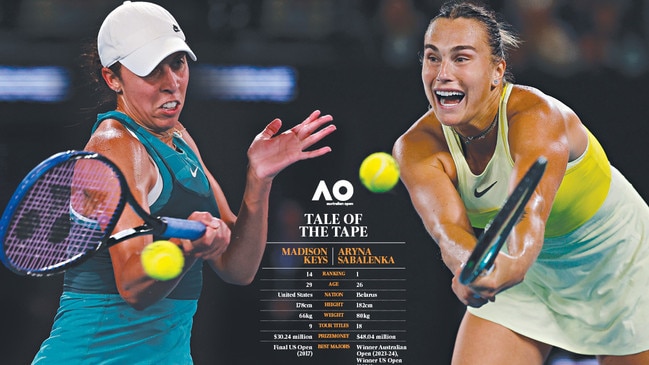
The fascination in Saturday night’s final is that Sabalenka is facing another scorpion. But this scorpion doesn’t always think like an arachnid with a sting in its tail. Madison Keys is the only female player who can match Sabalenka for power but she’s prone to losing her nerve when she’s halfway across the river or serving for an important match. What happens when two scorpions collide? We’re about to find out.
Sabalenka and Keys played a three-set thriller in the semi-finals of last year’s US Open. Keys lost her bite under pressure and let it slip, but her nerve-rattling three-set triumph over Iga Swiatek in the semi-finals suggested a more merciless mentality.
“I’m still trying to come down and figure out where I am,” a delighted, eyes-glazed, and rather goofy version of Keys says of reaching her first final at Melbourne Park.
“Really proud of myself.” While you’re on cloud nine, what’s it like up there?
“I mean, honestly, I just kind of blacked out,” she says. “I can’t really put sentences together totally. It just kind of feels like everything is happening very quickly. I’m kind of trying to figure out what’s going on.”
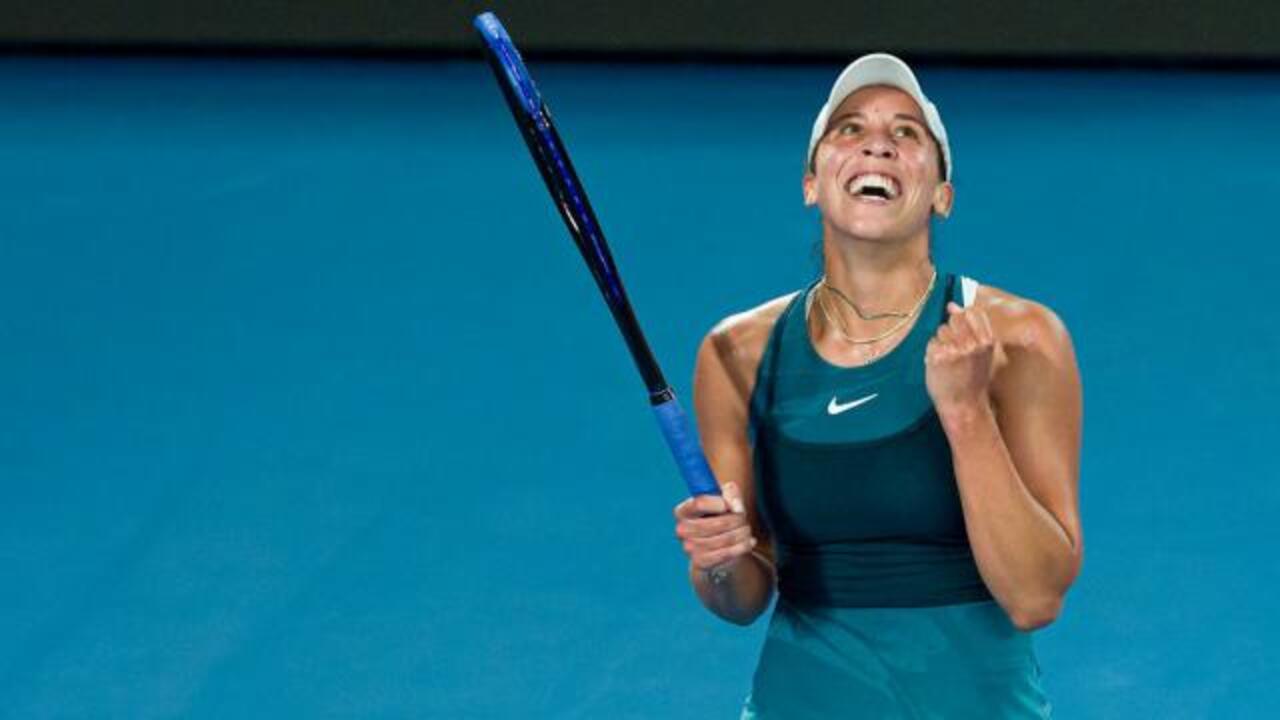
It’s always been in Keys’s nature to want a major championship so badly that she freaks out when a trophy like the Daphne Ackhurst Memorial Cup is at her trembling fingertips. Two matches provide uncomfortable memories. They’re worthy of the screeching sounds from the shower scene in Psycho. As ever, Keys doesn’t just need to beat Sabalenka. She has to dig deep enough to master herself.
Match A. Keys served for the match against Sabalenka in last year’s US Open semi-finals. She fell apart in a stream of unforced errors, timidity, tension and double faults, eventually losing 0-6, 7-6 (7/1), 7-6 (10/5). Sabalenka crossed the river and won the title. It could and should have been Keys. Screech, screech, screech.
It’d be impolite to remind her of it. What the heck.
She grins: “Thank you. I’d be lying if I said there wasn’t doubts in that match. It felt like such a huge moment. I felt like I was so close. To be that close and to lose it was just so heartbreaking. I felt like I’d really left it all out there. That’s really all you can ask but at the end of the day, it’s a tough one to have to go home on. That one took a little while to kind of heal from and get past but at the same time, I just kept telling myself that if I keep putting in the work and doing my best and leaving it all out there, that’s the only thing I can do and control. Typically, those are the things that good things tend to happen from.”
Sabalenka recalls of her escape act against Keys in New York City: “I was under so much pressure. She was going for her shots and everything was going in and she was just crushing it. Then she started questioning herself. I saw that and I felt like, ‘OK, now’s the moment to make sure that you put as many balls back as you can’. That was the crucial moment. I turned around things but yeah, she played incredible, aggressive tennis in that semi.”
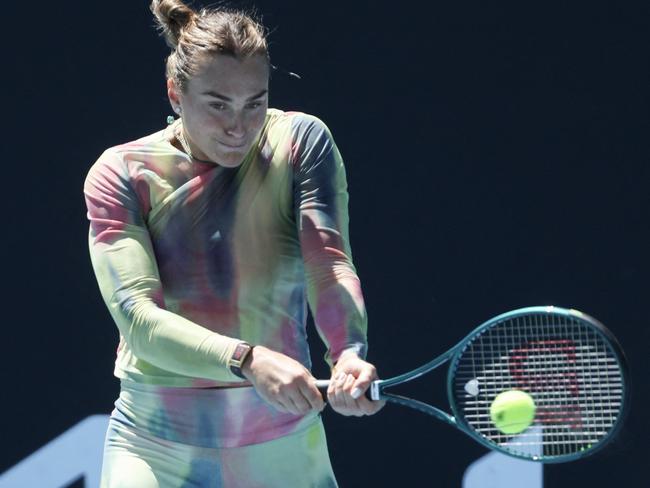
You’re only a real scorpion if you think like one. Keys has to start like a scorpion and if she gets into a winning position, crucially to everything, she has to stay a scorpion.
Match B that haunts her is the one and only other slam final she’s played, when she was the raging favourite against unranked, unseeded Sloane Stephens in the 2017 US Open. She lost 6-3, 6-0. Screech, screech, screech.
It’d be incredibly rude to remind her of that one, too. But what the heck.
She grins: “Guys! I’ve obviously thought of that match endlessly for the past eight years. I think during that match, I was so consumed with being nervous and the moment and the opportunity and all of that, I never really gave myself a chance to actually play. I’ve done a lot of work trying to not get rid of nerves, because I think in the past in my head it was kind of always the people who play amazing in the tight moments, they either don’t have nerves or they figure out how to get rid of them, but instead it’s about being able to play tennis with them.”
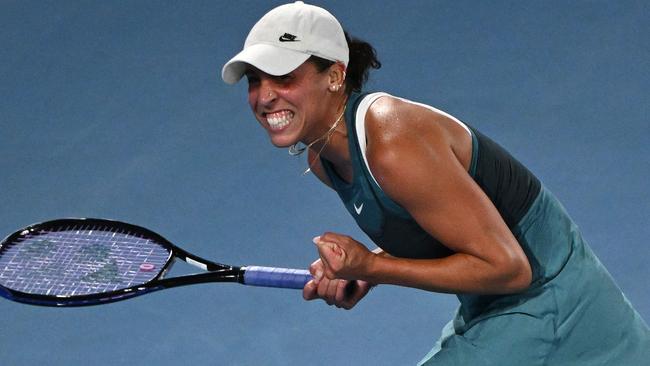
She stops grinning and adds: “The big thing for me has just been knowing there are going to be a lot of moments where I’m uncomfortable in the match. It’s going to be stressful. You have thousands of people watching you. You might not be playing your best tennis. Instead of trying to shy away from that and search for settling or comfort, just be OK with that’s the situation. You can also play tennis through it.
“That’s something I’ve been working really hard on. That’s probably one of the biggest lessons I can take from that US Open final. Just being OK with knowing that I’m probably going to be uncomfortable 99 per cent of the time I’m on the court, and that’s OK, I can play through it.”
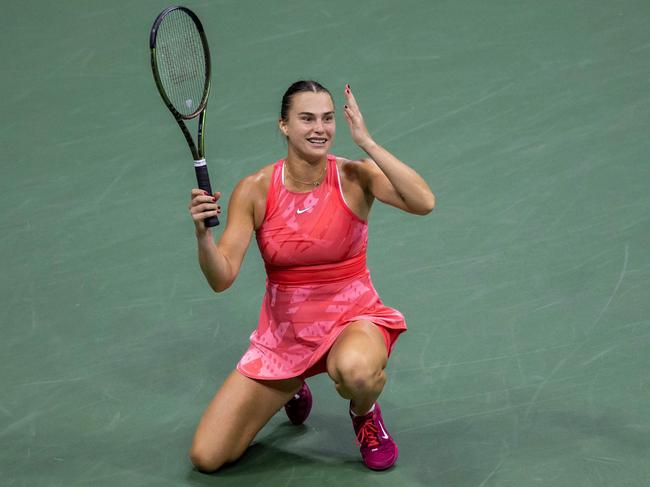
No book in world sport is quite so open as the grinning, grimacing, groaning, straining, struggling, unleashing, unloading, squinting, huffing, puffing, shrieking, squealing, grunting, yelping, laughing, strutting, skipping, stomping Sabalenka.
She, too, used to be a nervous Nellie, serving double faults like she was being paid for them, but she remembered who she was a couple of years ago. A scorpion.
She never bites off more than she can chew. A third straight winning of Daphne would plonk Sabalenka alongside Margaret Court (1969–1971), Evonne Goolagong (1974–1976), Steffi Graf (1988–1990), Monica Seles (1991–1993), Martina Hingis (1997–1999) and Novak Djokovic (2011-13, 2019-21) as the only players in the open era to grab a hat-trick of Opens.
“That’s crazy,” she says.

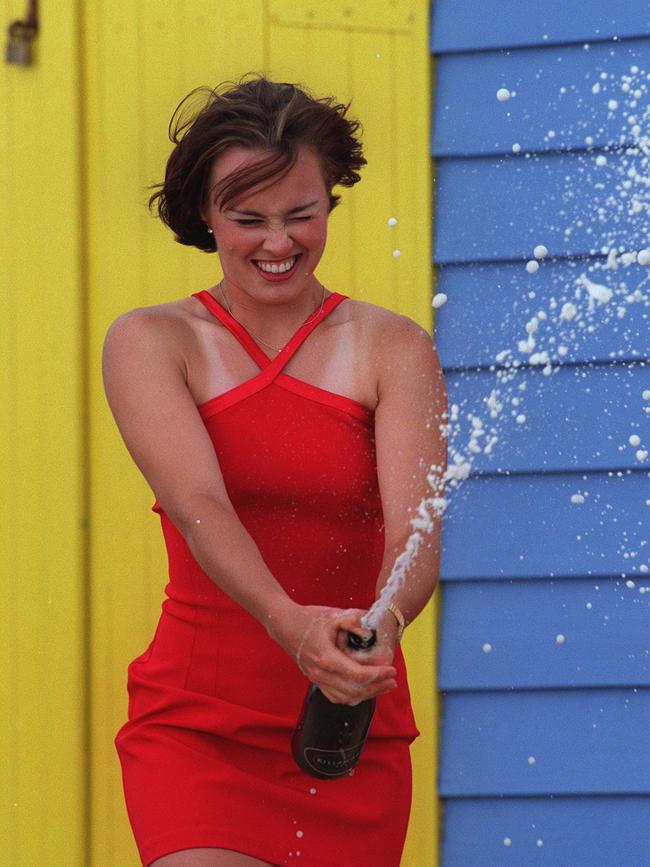
“It’s crazy that I’m able to put myself in the situation where I have a chance to put my name next to the legends. I couldn’t even dream about that. It’s going to mean a lot for me. It feels like home here, I feel so good here, I feel all the support. I feel like I’m coming home to my home slam.
“I know everything, I know every area. I know where to warm up so it’s not crowded. I go there and people are screaming my name, they’re supporting me, I have goosebumps every time they scream. ‘I’m like, ‘Let’s go Aryna!’.”
Rod Laver Aryna is hosting a potentially thrill-a-minute, ding-dong, demolition derby of a final. “What’s really impressive about Aryna is her mentality,” Keys says.
“Her ability to always go for it, no matter what the score is, is really impressive. She plays such fearless tennis. It’s very unique.
“A lot of people, if it’s a tight point, you kind of expect them to play a little bit more conservatively or back down a little bit. You know she’s not going to do that. Not only is that impressive on her side, but it puts more pressure on her opponents.
“You know you’re always going to have to try to win the point because she’s never going to play passively and give you an easy point. I’ve always been impressed with how she’s been able to do it.”
Keys has to do a Sabalenka on Sabalenka. Out-scorpion the scorpion. If she goes down, she has to go down swinging.

“The one thing I’ve really wanted to be better at is not playing passively on big points and really, honestly, just trying to emulate the way she trusts her game and the way she goes after it,” Keys says.
“If you’re able to do that and you miss and you lose … if it’s on your terms, it’s a little bit easier to swallow than if you’re playing passively and things don’t go the way you want them to anyways.”
Take me to the river. This all-time sting will be a ripper.
What the statistics don’t show is the greatest determining factor. The psychology. The inclination to go in for the kill when the opportunity arises.
Keys can match Sabalenka for forehands, backhands, serving and movement. But it’s her thoughts under pressure that will be paramount.
Screech, screech, screech.
“There’s been moments in my career when things are happening and things are easy and you just kind of run with the momentum,” she says. “The reality of the sport is that it’s hard to be on the high every single week.

“It’s the times when things aren’t going your way that it’s easy for doubt to creep in. For a really long time I felt like I was so close, doing it a certain way, and I just kept falling short. In my head it was, ‘If I keep doing it that way, maybe it will happen’.
“I started putting a lot of pressure on myself within that. I probably got a little too rigid in not wanting to change because things were good enough to be close.”
She’s changed her approach to all-out attack, all the time, timidity be damned, passivity hopefully a thing of the past, a new nature, and she’s switched racquets to a Yonex model offering more control.
She was so impressed by her coach, Bjorn Fratengelo, she married him.
“For a long time I just picked up a racquet and said, ‘This is great’, and moved on,” she says. “I started trying different racquets and saying, ‘Do I actually like them? Do I not like them?’ It gave me a better insight on what I like and what I wanted to do.
That’s built a little bit more self-trust. The big focus for me has been buying into ‘I’ll try anything, I’ll do anything, I’ll be open to any and all changes. Let’s go for it.’ That’s been freeing. I’m at the later point of my career and it’s felt like, ‘Why not?’”






